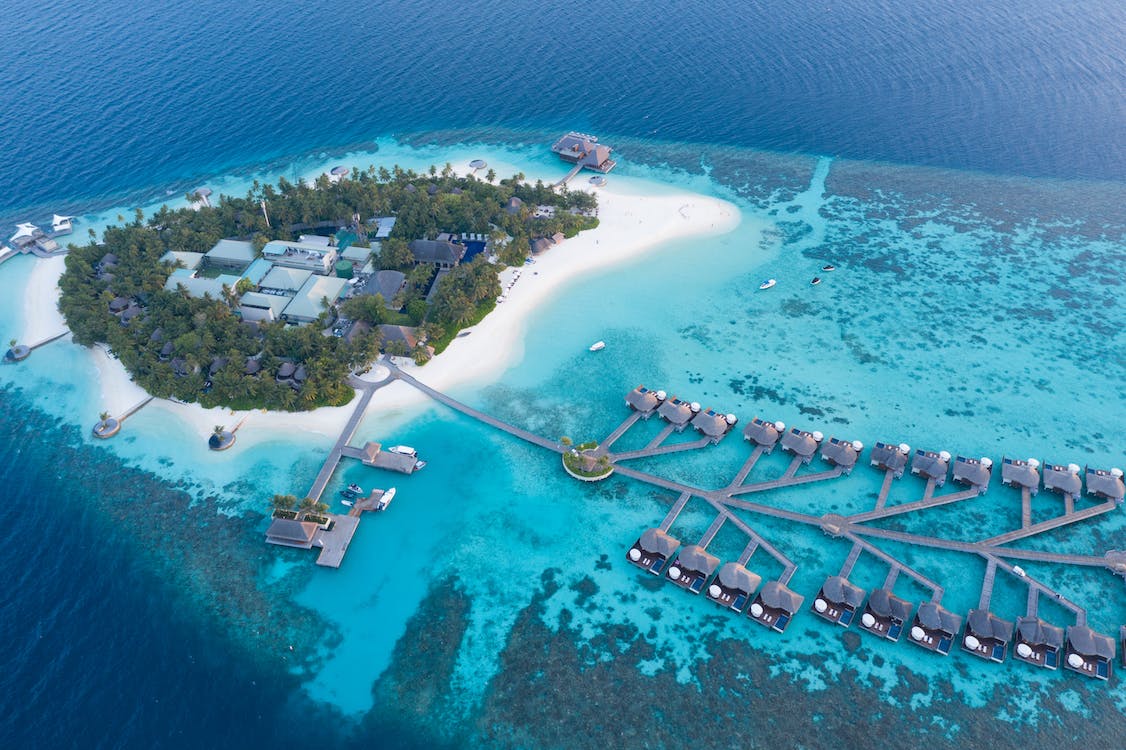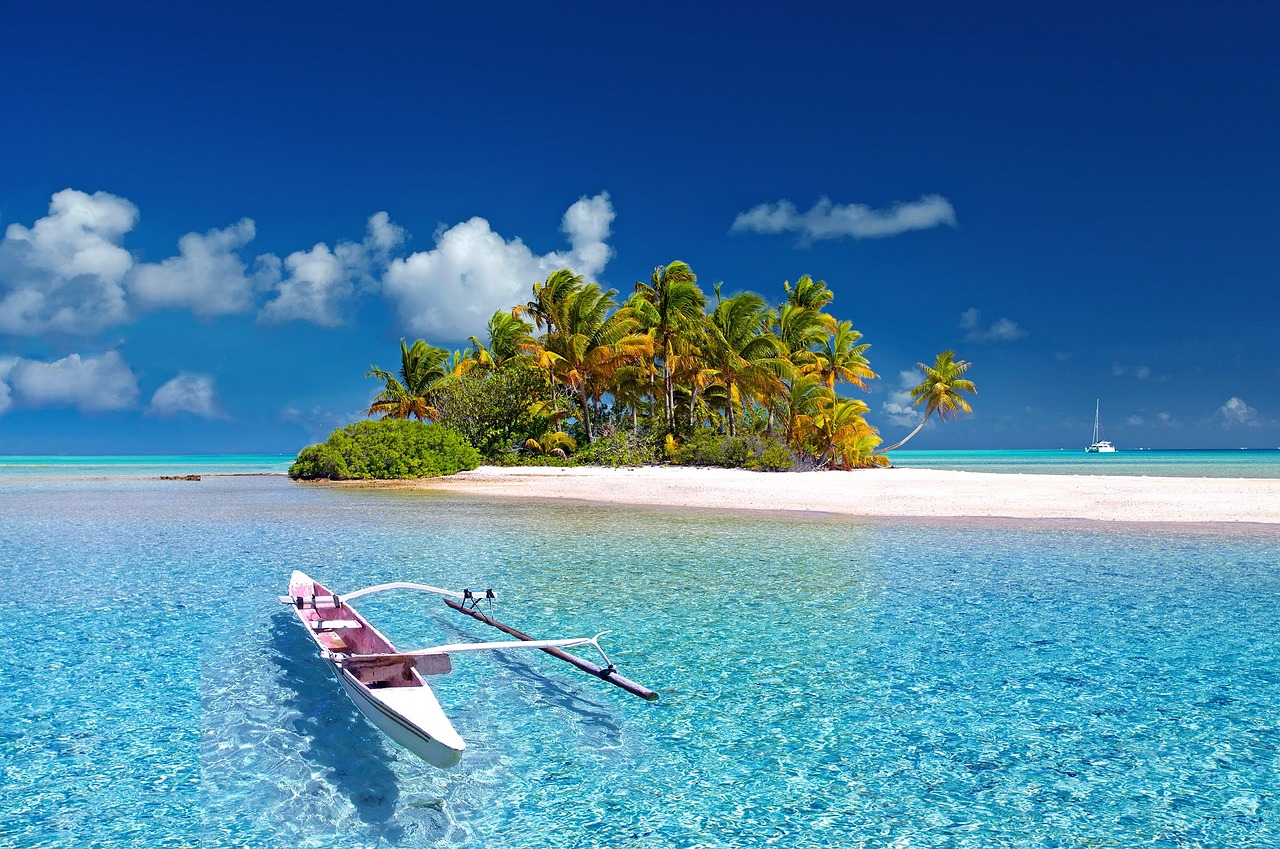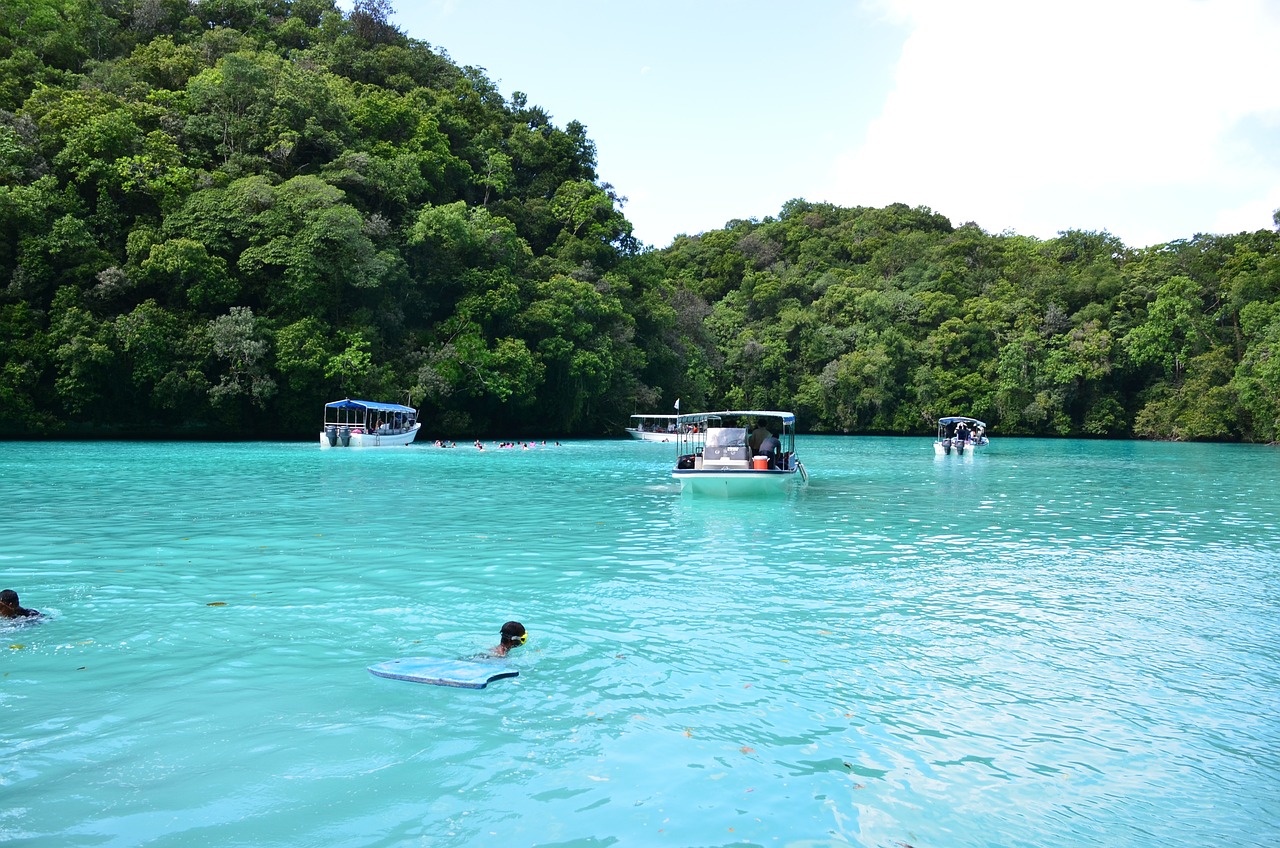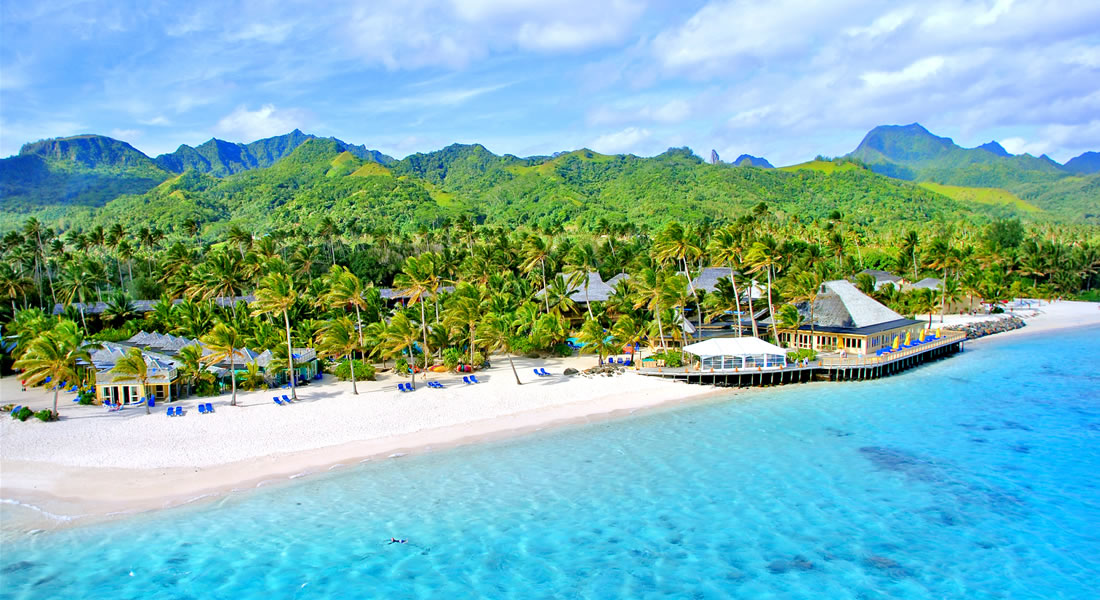Your Guide to the Top Destinations in Oceania in 2024

Have you ever dreamed of a tropical paradise, where the sun shines all year round, the water is crystal clear, and the people are friendly and welcoming?
Dream no more because Oceania is the perfect destination for you!
A region of endless wonders, spanning thousands of islands in the Pacific Ocean, Oceania features some of the most incredible destinations one can possibly dream of visiting. From island paradises to one of the world's most extreme countries, Oceania has it all!.
In this post, we'll go over some of the most exciting destinations Oceania has to offer and discover ways to get there, some of the best places to visit and the easiest ways to get there. This will help you make the most of your time and money.
And if you ever find yourself packing your bags, make sure you grab the eSIM Oceania and Australia to experience world-class connectivity instantly across the islands. With the prepaid plan, you''ll never find yourself at a spot where you're cut off from the world.

Fiji: A Tropical Treasure Trove of Islands
Imagine a place where you can find hundreds of islands, each with its own story to tell. A place where you can swim with colorful fish, dive into coral gardens, or fish for your dinner. A place where you can hike through lush forests, visit ancient villages, or marvel at cascading waterfalls. That place is Fiji, and it's waiting for you to discover it!
Made up of 333 islands, Fiji offers you the chance to find your own slice of paradise.
How to get to Fiji
Fiji is a popular destination for travellers from around the world, but getting there can be tricky depending on where you are coming from. The main airport is Nadi (pronounced as Nan-di), which receives direct flights from New Zealand, Australia, Los Angeles, Vancouver and Seoul.
Nadi, a multicultural hub, serves as Fiji's connection to the global stage. It is not only a gateway to other parts of Fiji but also a place where travellers start or end their journeys.
The cheapest and most frequent flights are from Australia and New Zealand, where you can also find package deals and discounts.
From North America, Europe or Asia, you will have to pay more and deal with longer flights and stopovers. The best way to save money and find more options is to book your flights and accommodation separately online.
Fiji Visa requirements
Travellers planning to visit Fiji typically need to secure a visa from one of the Fijian diplomatic missions, except if they come from one of the 109 visa-exempt countries.
However, it's essential to note that regardless of their nationality, all visitors must possess a passport with a minimum validity of six months to gain entry into Fiji.
Fijian culture
Fiji stands out in the South Pacific as a culture resilient in the face of external influences, rooted in communal traditions derived from village life. The society remains led by hereditary chiefs, with a strong sense of indigenous pride evident in their demeanor and hospitality.
Life on the islands moves at a slower pace, where the hot sun and humid air encourage a relaxed approach to time. Delays or slower service may occur, but eventually, things do get done in Fiji, reflecting their unique way of life.
In Fiji, the culture blends informal personal relationships with a tradition of ritual formality within a hierarchical society. Rural areas are marked by respectful greetings when passing others, with special greetings reserved for the gentry. In villages, central areas where chiefly lineages reside demand respect, including modest attire and quiet behavior.
Customs involve the removal of footwear before entering a house, and guests must wait near the entrance until invited further inside. A long-standing system of gift exchange, centered around prized items like sperm whale teeth (known as "tabua"), plays a vital role in events like marriages and funerals, accompanied by formal speeches.
Things to do in Fiji
• Explore Underwater Wonders: Fiji boasts warm, clear waters and stunning coral reefs teeming with marine life. The best snorkeling experiences are often found on boat trips to coral reefs, with dive stores available at resorts for all skill levels.
• Experience Traditional Bures: Embrace Fijian culture by staying in a "bure," a traditional hut or bungalow with thatched roofs. Resorts offer a range of options from basic, authentic bures with straw mats to modern, luxury versions, providing an eco-friendly accommodation experience.
• Island Adventures: Fiji comprises over 330 islands, offering a multitude of opportunities for exploration. Visit the nearby Mamanuca Islands for day trips or overnight stays, enjoying boat rides to uninhabited tropical paradises, swimming, snorkeling, and savoring Fijian buffets with ocean views.
• Spa Indulgence and Cultural Immersion: Relax with Fijian spa treatments, including traditional massages and coconut-based therapies available at many resorts.
• Discover the Fijian way of life:. Consider visiting a Fijian village, either with a tour group or independently, to gain insight into the gracious and welcoming nature of the locals. Participate in a kava ceremony, a Fijian tradition involving a unique, mildly relaxing drink made from yaqona root, which is often an appreciated gift for village chiefs.

French Polynesia: An Exotic Archipelago of Paradise Islands
French Polynesia is a dream destination for many travelers, especially those looking for a tropical paradise with stunning scenery, rich culture, and diverse activities.
Whether you want to relax on the beach, explore the underwater world, or learn about the history and traditions of the Polynesian people, you will find something to suit your interests in this beautiful archipelago.
French Polynesia consists of 121 islands and atolls, divided into five groups: the Society Islands, the Tuamotu Islands, the Marquesas Islands, the Gambier Islands, and the Austral Islands. Each group has its own charm and attractions, but some of the most popular and well-known islands are Tahiti, Bora Bora, and Mo'orea. These islands offer luxurious resorts, overwater bungalows, white sand beaches, turquoise lagoons, and breathtaking views of the mountains and the ocean.
There is more to French Polynesia than just sun and sand, though. You can also enjoy a variety of activities, such as snorkeling, diving, surfing, sailing, hiking, kayaking, whale watching, and cultural tours.
You can also taste the delicious local cuisine, which is influenced by French, Chinese, and Polynesian flavors. You can try dishes like poisson cru (raw fish marinated in lime juice and coconut milk), fafa (chicken or pork cooked with taro leaves and coconut milk), and po'e (a sweet pudding made with fruit and starch).
French Polynesia is a place where you can experience the best of both worlds: the luxury and comfort of modern amenities, and the beauty and authenticity of nature and culture.
How to get to French Polynesia
French Polynesia is a dream destination for travelers from across the globe, but reaching this remote paradise can be an adventure in itself. The primary international gateway is Faa'a International Airport in Tahiti, which welcomes flights from major cities like Los Angeles, Auckland, Tokyo, and Paris.
From North America, Europe, or Asia, you may face longer flights and stopovers, so it's wise to plan your journey well in advance and search for flight deals. Consider booking your flights and accommodations separately online for more flexibility.
French Polynesia Visa requirements
Travellers to French Polynesia have specific visa requirements that vary depending on the duration of their stay. If your visit is less than 90 days, you're in luck as you won't need a visa to enter.
However, it's essential to keep in mind that you must possess a passport that remains valid for at least six months beyond your planned departure date. This requirement ensures a hassle-free entry and exit from this stunning paradise.
For those with plans to stay in French Polynesia for more than 90 days, a long-stay visa is a must. To acquire this visa, you'll need to go through the application process via your home country's French consulate or embassy.
Keep in mind that obtaining a long-stay visa can be a more involved process and may require additional documentation. This can include providing evidence of financial support, proof of employment, or confirmation of housing arrangements.
French Polynesian culture
French Polynesia's culture is a vibrant blend of indigenous Polynesian traditions and French influences, creating a unique and welcoming atmosphere for travelers. Deeply rooted in communal living and island life, it is vital that the local way of life be respected.
Politeness and respect are highly valued in French Polynesian culture. When interacting with locals, be courteous and greet people with a smile and a friendly "Ia ora na" (hello). You should also know that gift-giving is a significant aspect of French Polynesian culture. Items like traditional crafts, local art, or pearls are often exchanged during celebrations, ceremonies, or as tokens of goodwill.
While French is the official language, many people also speak Tahitian and English. Learning a few basic Tahitian phrases can enhance your travel experience and show respect for the local culture.
Things to do in French Polynesia
• Snorkeling and Diving: Explore the crystal-clear waters and vibrant coral reefs teeming with marine life. The islands offer some of the best snorkeling and diving spots in the world, with opportunities for all skill levels.
• Overwater Bungalows: Stay in an overwater bungalow for a luxurious and romantic experience. These iconic accommodations provide direct access to the turquoise lagoons, offering privacy and breathtaking views.
• Hiking and Exploration: Discover the lush, volcanic landscapes of the islands by embarking on hiking adventures. Trails lead to waterfalls, viewpoints, and secluded beaches, providing opportunities for nature lovers and outdoor enthusiasts.
• Water Activities: Enjoy a variety of water sports, including paddleboarding, kayaking, and windsurfing. You can also go on boat tours, fishing trips, or take a sunset cruise.
• Pearl Farm Tours: French Polynesia is famous for its black pearls. Take a tour of a pearl farm to learn about the cultivation process and have the opportunity to purchase exquisite pearl jewelry.
• Spa and Wellness: Unwind with traditional Polynesian spa treatments, such as massages and coconut-based therapies, available at many resorts.

Nauru: A Unique Micronesian Gem in the Pacific
Nestled in the heart of the Pacific Ocean, Nauru may be the world's third smallest country, but it's a place of remarkable charm and significance. Known as the "Pleasant Island," Nauru offers visitors an opportunity to explore a unique blend of culture, history, and natural beauty. Its secluded location and distinct character make it a destination like no other.
How to get to Nauru
The Nauru International Airport is the primary gateway, receiving flights from Brisbane, Australia, and connecting with nearby Pacific destinations like Fiji and the Solomon Islands. It's essential to plan your journey well in advance and check for flight options and schedules to ensure a smooth trip.
Nauru Visa requirements
Most travelers visiting Nauru for tourism purposes typically need a visa, which can be obtained by applying through the Nauruan government's official channels.
Nauru is known for its strict immigration policies, and it's crucial to meet all entry requirements and have a passport with at least six months of validity from your departure date.
Nauruan Culture
Nauru's culture is a unique blend of indigenous Micronesian traditions and influences from colonial history and modern globalization. The community-centered way of life is deeply rooted in Nauru, where strong family and communal bonds are essential. Traditional extended families play a significant role in the social fabric of the island.
Language also plays a crucial role in Nauru's cultural identity, with Nauruan and English being the official languages, and Nauruan being widely spoken among the local population.
Nauruans have preserved their traditional customs and practices, often revolving around dance, music, storytelling, and handicrafts. Modest behavior and attire are customary, especially when visiting local communities or participating in traditional ceremonies. Nauru has a rich oral tradition, with storytelling being a vital means of passing down the cultural heritage and history from one generation to the next.
Traditional dances and music are integral components of Nauruan culture, and the "Te Rung" dance is one of the most celebrated traditional dance forms. Traditional ceremonies and rituals mark important life events, including births, marriages, and funerals. These ceremonies often involve the exchange of gifts and formal speeches, emphasizing the cultural significance of these events.
Nauru's history of colonisation by Germany, Britain, and Australia has left a lasting imprint on the culture. English remains one of the official languages, and Western influences can be observed in various aspects of daily life. Additionally, Nauruans widely practice Christianity, particularly Protestantism, which has integrated into the local culture.
Respect for elders is a deeply ingrained value in Nauru, and the wisdom and guidance of the elderly are highly valued in the community. Traditional Nauruan cuisine often features seafood, coconut, and root vegetables, and dishes like "Palusami" (coconut cream and taro leaves) and "Iori" (a raw fish dish) are commonly enjoyed.
Nauru's culture reflects a mix of traditional Micronesian customs, colonial history, and the influences of modern times. The people of Nauru are known for their warmth and hospitality, and travellers to the island will often find a welcoming and close-knit community eager to share their cultural heritage.
Things to do in Nauru
• Explore Nauru's Unique Landscape: Nauru is an elevated coral atoll and boasts striking coastal cliffs and phosphate pinnacles, remnants of the island's mining history. Discover the Buada Lagoon, a serene natural sanctuary in the heart of the island, surrounded by lush vegetation and native wildlife.
• Discover the Local History: Explore the remnants of World War II, including old bunkers and gun emplacements. Visit the Nauru Museum to gain insight into the island's rich history, including its mining heritage and cultural artifacts.
• Enjoy the Beaches: Nauru offers picturesque beaches where you can relax, swim, or simply take in the breathtaking ocean views. Popular spots include Anibare Bay and the clear waters of Ewa Beach.
• Engage with the Community: Participate in local events and traditional celebrations to immerse yourself in Nauruan culture. You might have the opportunity to join in on dances, music performances, and feasts, experiencing the warmth and hospitality of the Nauruan people.
• Savor Local Cuisine: Nauru offers a variety of traditional dishes, often featuring fresh seafood and coconuts. Don't miss the chance to try Nauruan specialties like "palusami" (coconut cream and taro leaves) and "iori" (a raw fish dish).
Nauru, with its distinctive charm and rich cultural heritage, offers a truly unique travel experience. Whether you're drawn to its natural beauty, historical sites, or the warm embrace of its people, Nauru has something special to offer every traveler willing to explore its hidden treasures.

Papua New Guinea: An Uncharted Paradise in the Pacific
Papua New Guinea, the land of a thousand cultures, is a treasure trove of biodiversity, rich traditions, and unspoiled natural beauty. This diverse nation, located in the southwestern Pacific, offers visitors a unique opportunity to explore a world where ancient customs intertwine with the modern way of life.
How to get to Papua New Guinea
Papua New Guinea is accessible by air, with major international gateways in Port Moresby and Lae. Jacksons International Airport in Port Moresby is the largest and busiest airport, offering connections to various international destinations, including Australia, Singapore, and other Pacific countries. Plan your travel carefully and consider booking flights well in advance for the best options and deals.
Papua New Guinea Visa requirements
Travellers to Papua New Guinea typically require a visa, which can be obtained through the country's diplomatic missions or online e-Visa services. Ensure you have a passport with at least six months' validity from your departure date.
Papua New Guinean Culture
Papua New Guinea's culture is a vibrant mosaic, shaped by its incredible ethnic and linguistic diversity. With over 800 different languages and numerous indigenous groups, the country's cultural complexity is one of its defining features. Each group has its own customs, languages, and traditions, contributing to the rich tapestry of Papua New Guinean culture.
Central to the culture of Papua New Guinea is the communal village life, where traditions are upheld and passed down through generations. Villages often operate as self-sufficient units with their own customary leaders, and travelers have the opportunity to immerse themselves in this unique way of life by engaging with local communities and witnessing traditional practices.
Oral tradition plays a vital role in preserving cultural heritage, with indigenous groups using storytelling, songs, and dances to convey their history and traditions. These practices are often showcased during cultural festivals and gatherings, allowing visitors to witness the depth of Papua New Guinea's cultural storytelling.
Traditional attire and adornments, known as "bilas," are essential expressions of identity and status. Body paint, headdresses, shells, and woven fiber skirts are some of the elements that contribute to the vibrant and diverse appearance of Papua New Guineans.
The cultural landscape of Papua New Guinea is diverse, with a contrast between traditional rural communities and urban areas influenced by modernization and globalization. The coexistence of these different lifestyles contributes to the country's cultural richness.
Travellers have the unique opportunity to engage with this diverse and dynamic culture by interacting with local communities, participating in cultural festivals, and exploring the traditional customs that make this country a captivating destination for cultural exploration.
Things to do in Papua New Guinea
• Explore the Natural Wonders: Papua New Guinea is a biodiverse paradise, with lush rainforests, pristine beaches, and vibrant coral reefs. Immerse yourself in nature by trekking through the Highlands, diving in crystal-clear waters, and discovering unique wildlife in national parks.
• Engage with Local Communities: Experience traditional village life by visiting local communities and engaging with the indigenous people. Participate in sing-sings (cultural festivals) to witness vibrant traditional dances, music, and art.
• Discover Historical Sites: Explore World War II relics and historical sites scattered throughout the country, providing a glimpse into the region's wartime history.
• Attend Cultural Festivals: Papua New Guinea hosts numerous cultural festivals throughout the year, celebrating traditional music, dance, and art. The Goroka Show and Mount Hagen Show are among the most renowned.
• Savor Traditional Cuisine: Try Papua New Guinean dishes, which often feature fresh seafood, root vegetables, and tropical fruits. Don't miss the chance to sample local specialties like "mumu" (a traditional feast) and "sago" (a staple food made from palm).
Papua New Guinea, with its extraordinary blend of natural beauty and cultural diversity, offers a truly immersive travel experience. Whether you're drawn to its pristine landscapes, vibrant festivals, or the warmth of its people, Papua New Guinea promises to be an unforgettable journey of exploration and discovery.

Tonga: The Friendly Islands, A Polynesian Paradise
Tonga, known as the "Friendly Islands," is a Polynesian paradise in the South Pacific that beckons travelers with its warm hospitality, stunning landscapes, and vibrant culture. This unique island nation offers a wealth of experiences, from exploring pristine beaches to immersing yourself in the rich cultural traditions of the Tongan people.
How to get to Tonga
Tonga is accessible by air and sea. Fua'amotu International Airport near Nuku'alofa, the capital, serves as the primary international gateway. It receives flights from major cities, including Auckland, Sydney, and Honolulu. You can also arrive by cruise ship, which offers a scenic approach to the islands.
Tonga Visa requirements
Travelers to Tonga typically do not need a visa for short tourist stays. Visitors from visa-exempt countries can enjoy hassle-free entry. Ensure you have a passport with at least six months of validity from your intended departure date.
Tongan culture
Tonga's culture is deeply rooted in its Polynesian heritage and is characterized by a strong sense of community, respect for tradition, and the preservation of ancient customs. When traveling to Tonga, visitors will encounter a culture that values both its rich history and warm hospitality.
You should know that Tonga is a monarchy, and only remaining hereditary monarchy in the Pacific Needless to say, respect for the monarchy is an essential aspect of Tongan culture. The royal family is held in high regard, and visitors are encouraged to show deference to the monarchy during their stay.
Tonga's culture places a strong emphasis on the importance of family and community. The extended family is the cornerstone of Tongan society, and communal living is a fundamental aspect of life.
This also means that politeness and respect are highly regarded in Tongan culture. Visitors are encouraged to greet locals with a warm smile and use the traditional Tongan greeting, "Mālō e lelei." Respect for others, especially elders and those in authority, is deeply ingrained in Tongan society.
Traditional Tongan feasts, known as "fakapale," are a customary way of celebrating special events and welcoming guests. These feasts involve a sumptuous spread of local dishes and are an opportunity for visitors to experience Tongan cuisine.
Things to do in Tonga
• Explore Tropical Beauty: Tonga boasts pristine beaches, crystal-clear waters, and coral reefs teeming with marine life. Embrace the opportunity to swim, snorkel, or dive in the warm Pacific waters, with guided tours available at many resorts.
• Attend Cultural Performances: Witness traditional Tongan dances, music, and art during cultural performances and festivals. The Heilala Festival and the Free Wesleyan Church's Annual Conference are among the most celebrated events on the calendar.
• Visit Royal Palaces: Explore the historic royal palaces in Nuku'alofa, which offer insights into the country's monarchy and heritage. The Royal Palace and the Royal Tombs are notable landmarks.
• Engage in Whale Watching: Tonga is one of the world's best places for humpback whale watching. Take a whale-watching tour to witness these magnificent creatures up close during their migratory season.
• Sample Tongan Cuisine: Savor Tongan dishes such as 'ota ika (raw fish salad), lu pulu (coconut milk and taro leaves), and 'otai (a refreshing coconut drink). Traditional Tongan feasts, known as 'umu, offer a culinary experience worth trying.
So there you have it, a gentle introduction to the best destinations to discover in Oceania. Start packing your bags and remember to get an eSIM Oceania to get the best possible network quality during your stay.









![Orange Holiday Zen eSIM 12GB, 30Min. [Calls & 200 SMS from Europe to Worldwide + Unlimited Calls & SMS in Europe] Orange Holiday Zen eSIM 12GB, 30Min. [Calls & 200 SMS from Europe to Worldwide + Unlimited Calls & SMS in Europe]](https://holidayesim.com/image/cache/catalog/category2/12gb-esim-250x250h.png)


